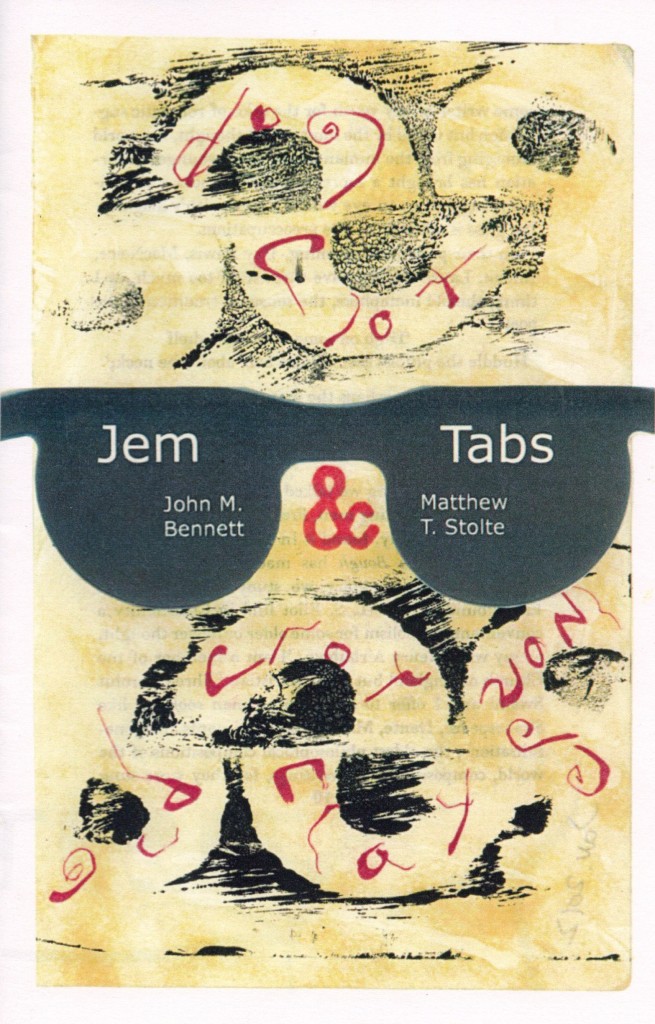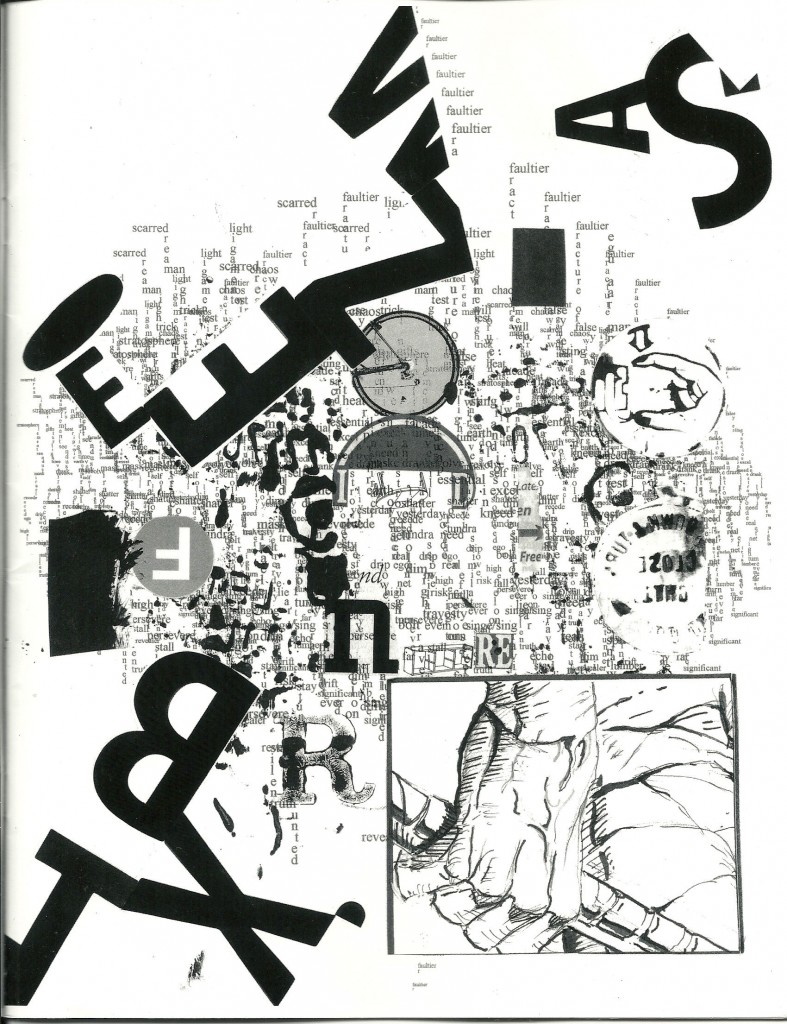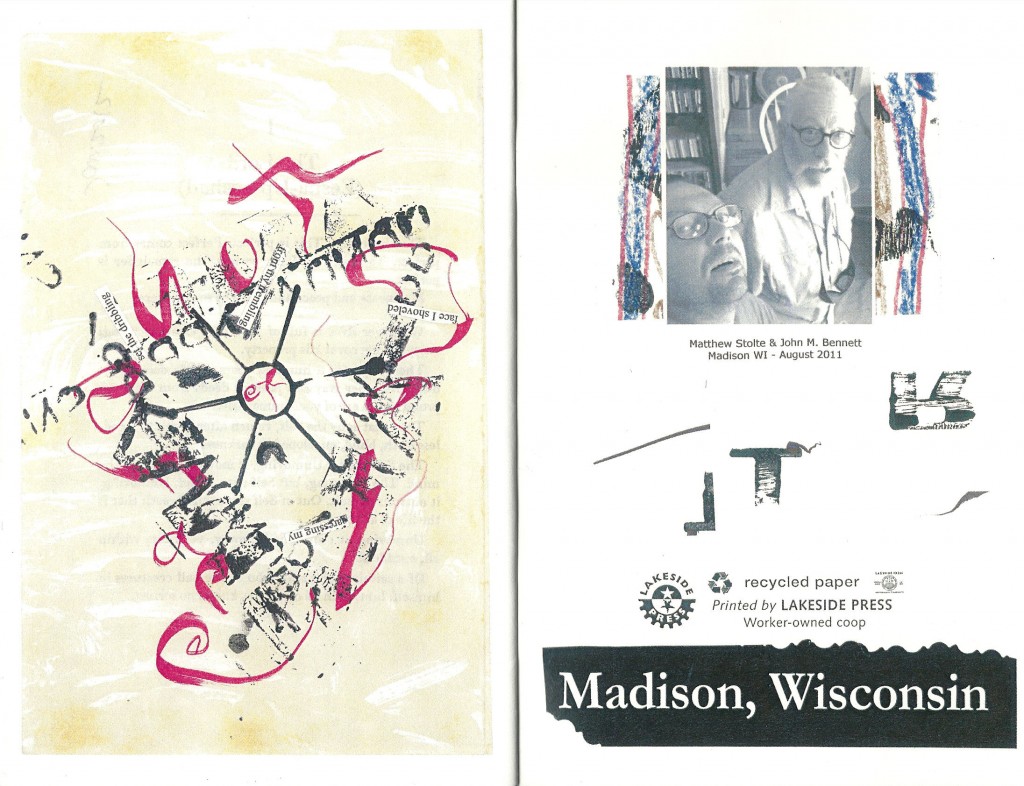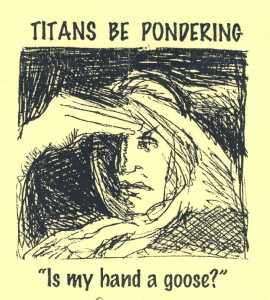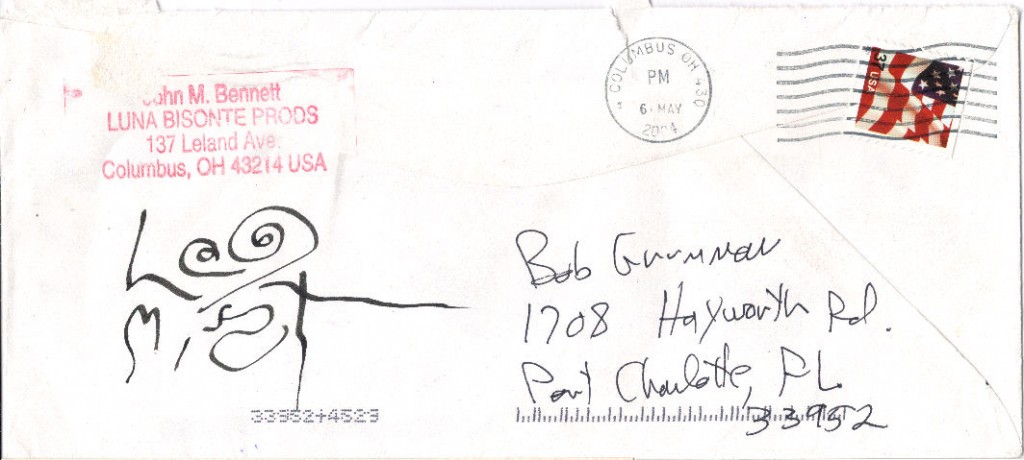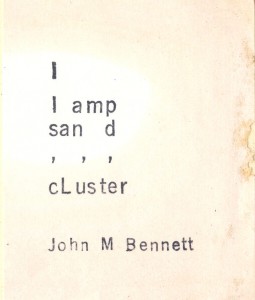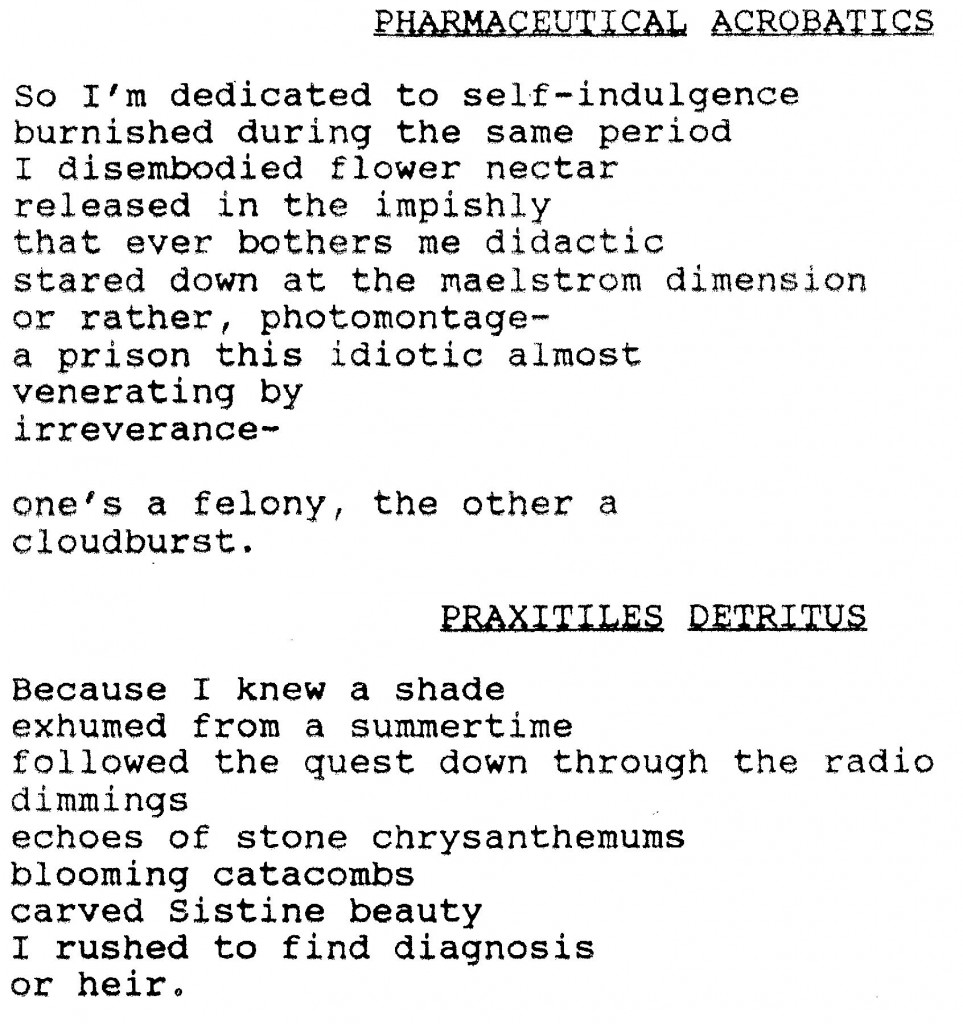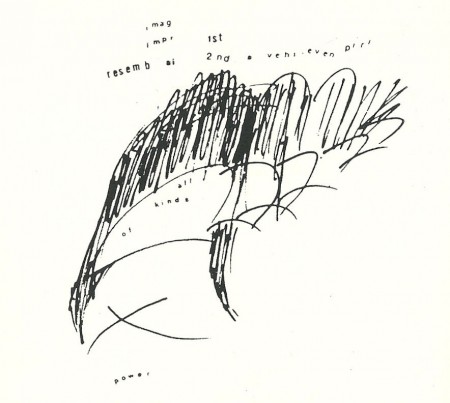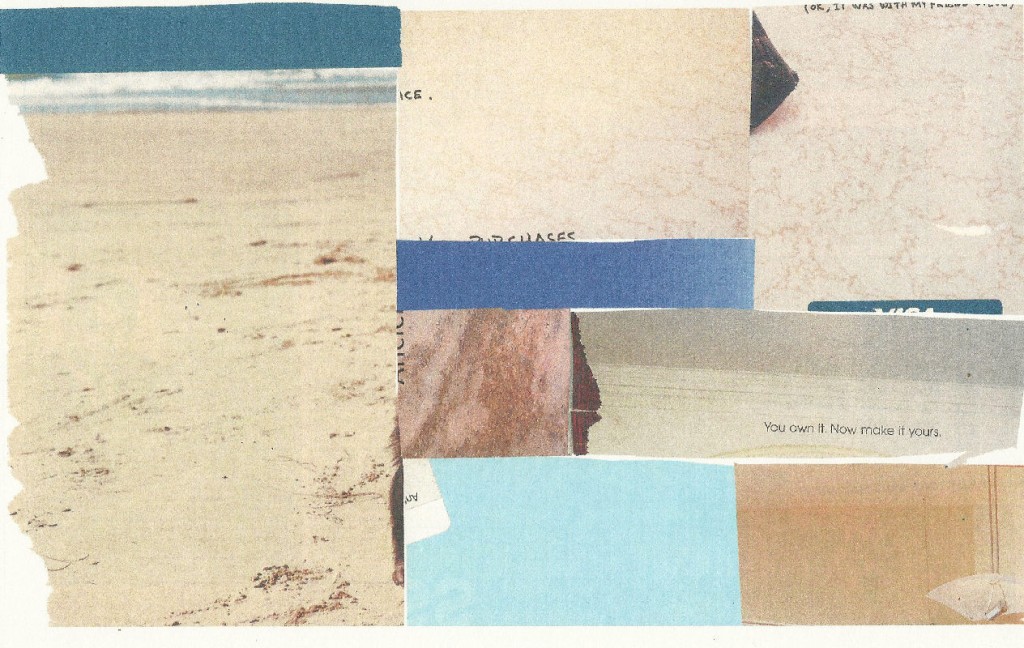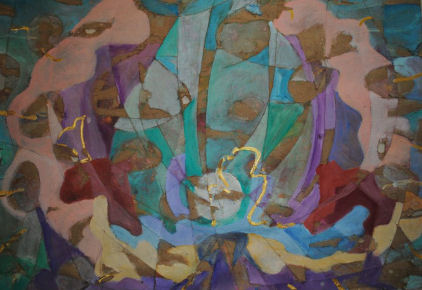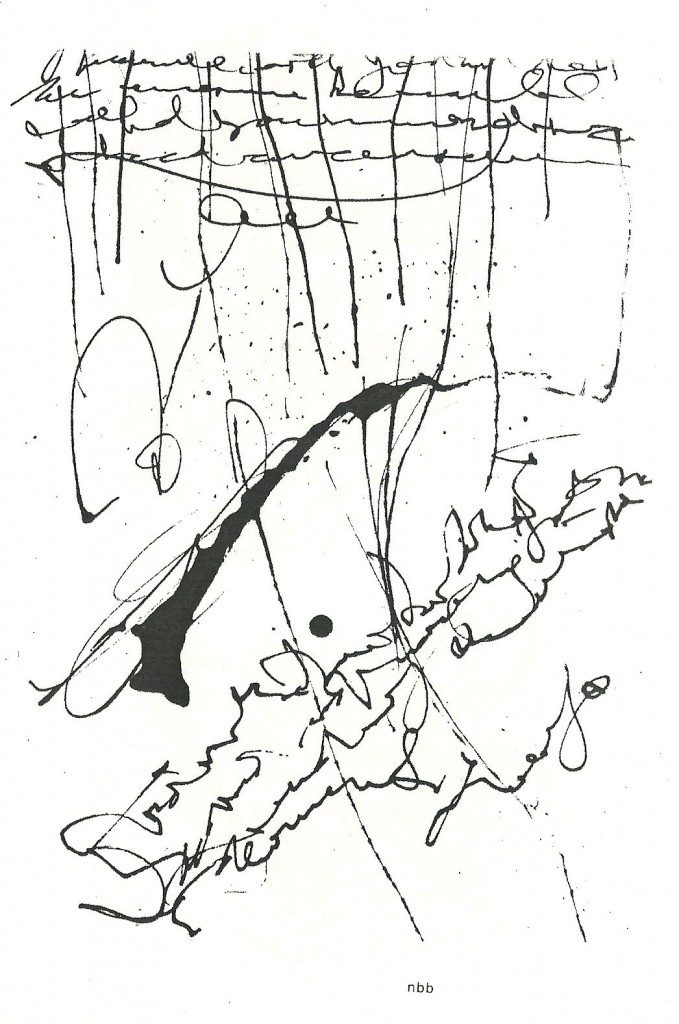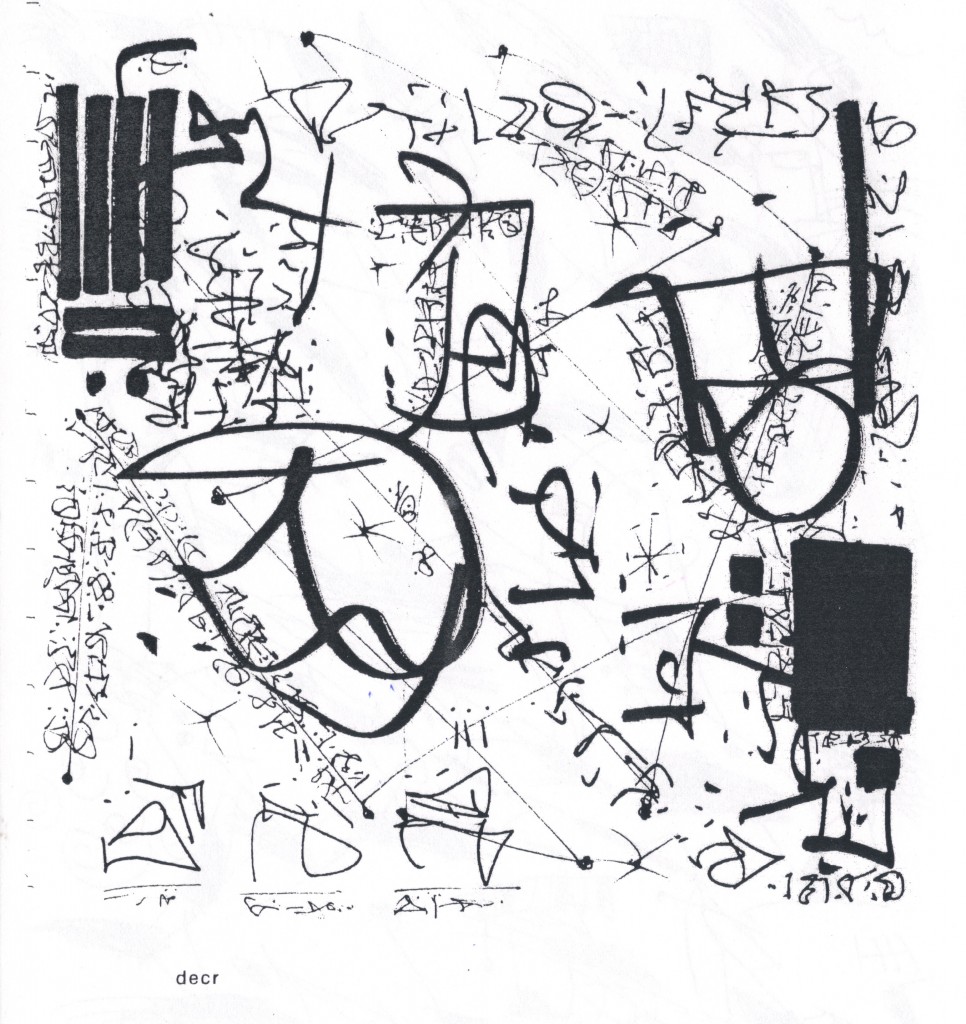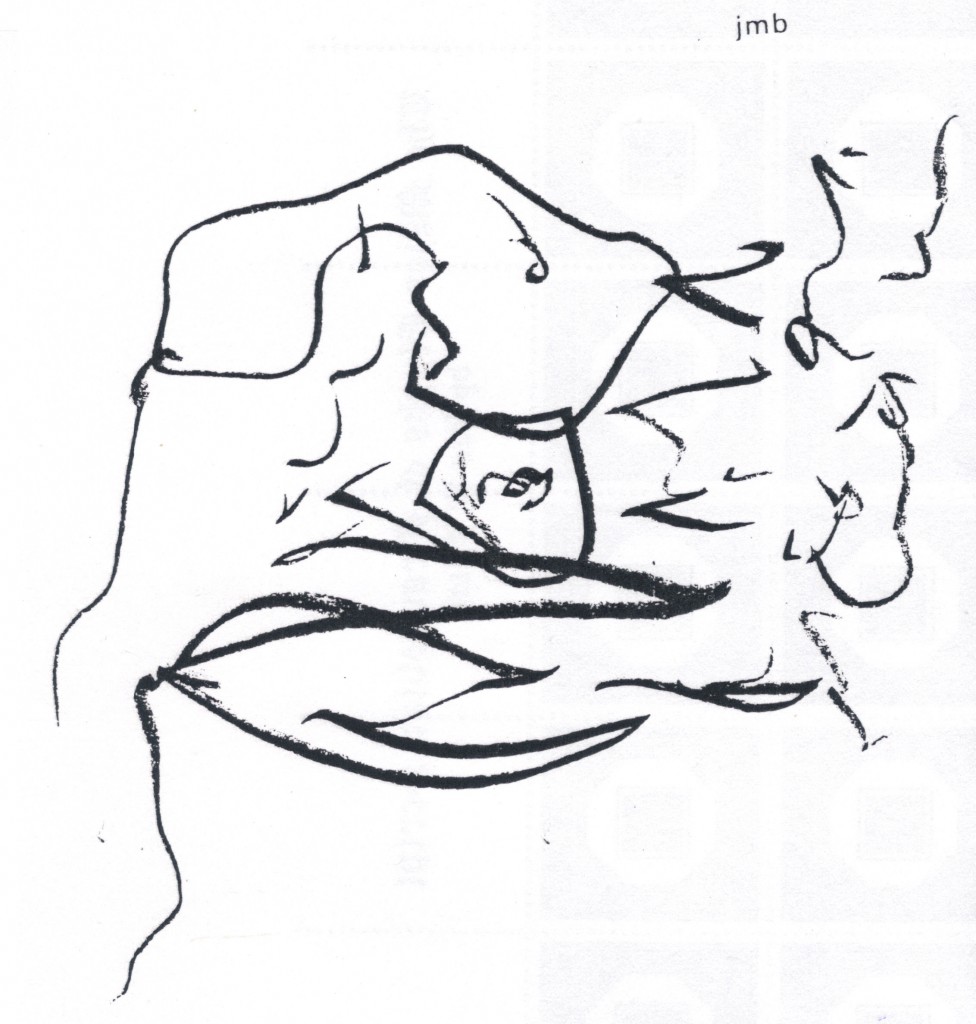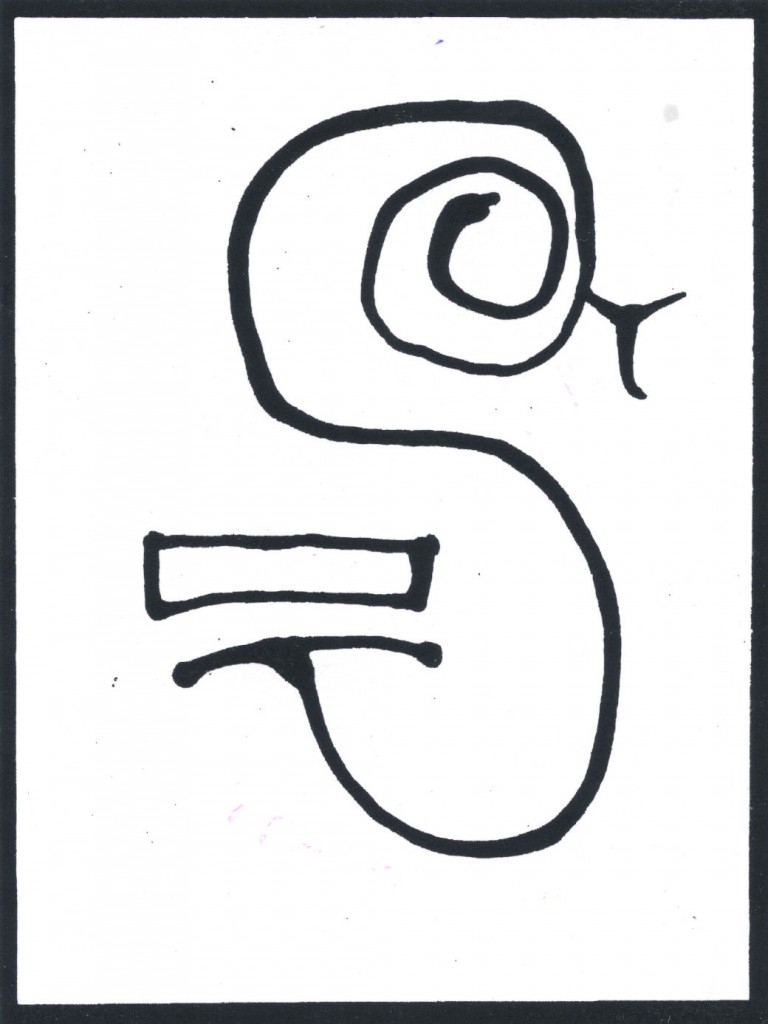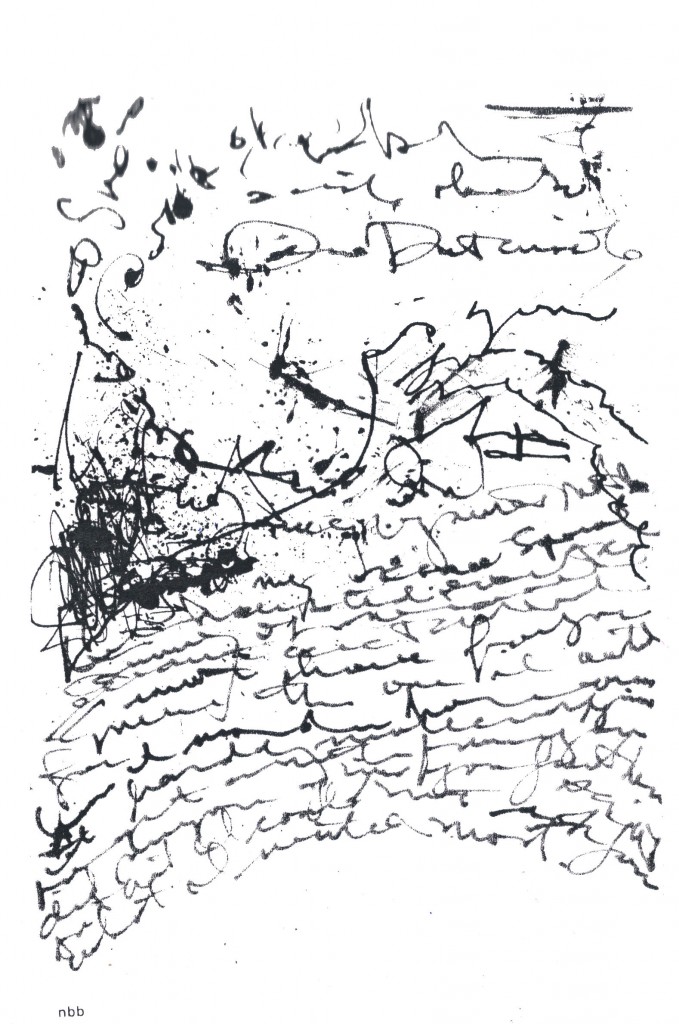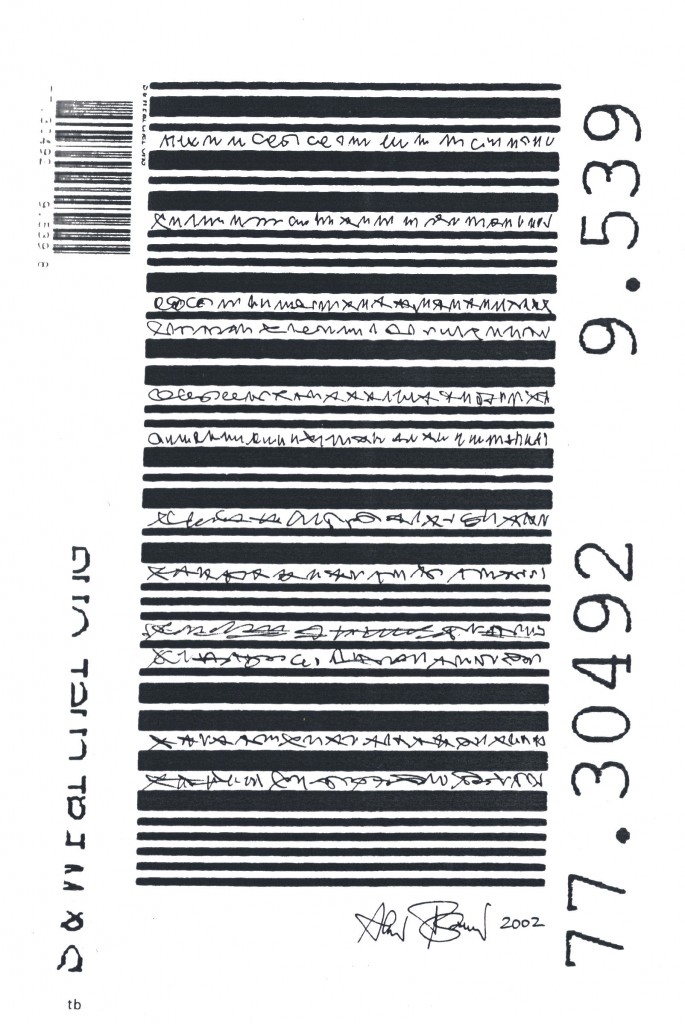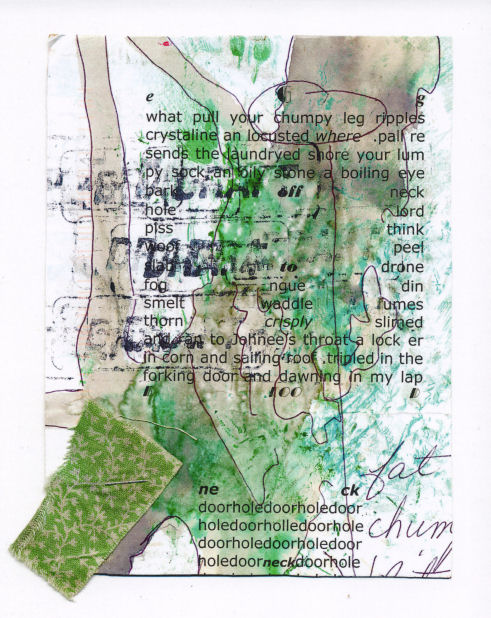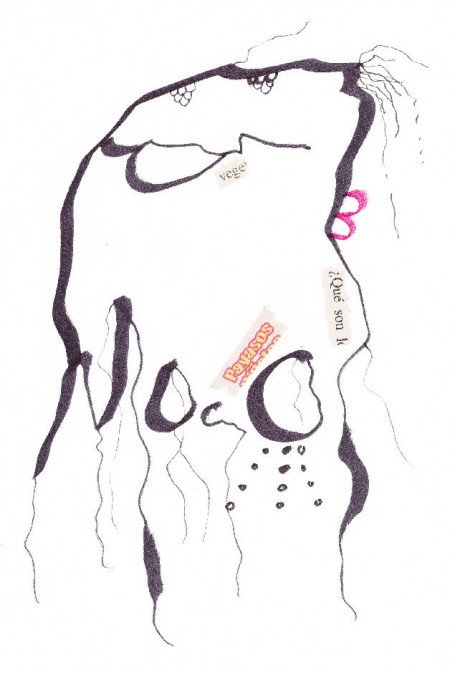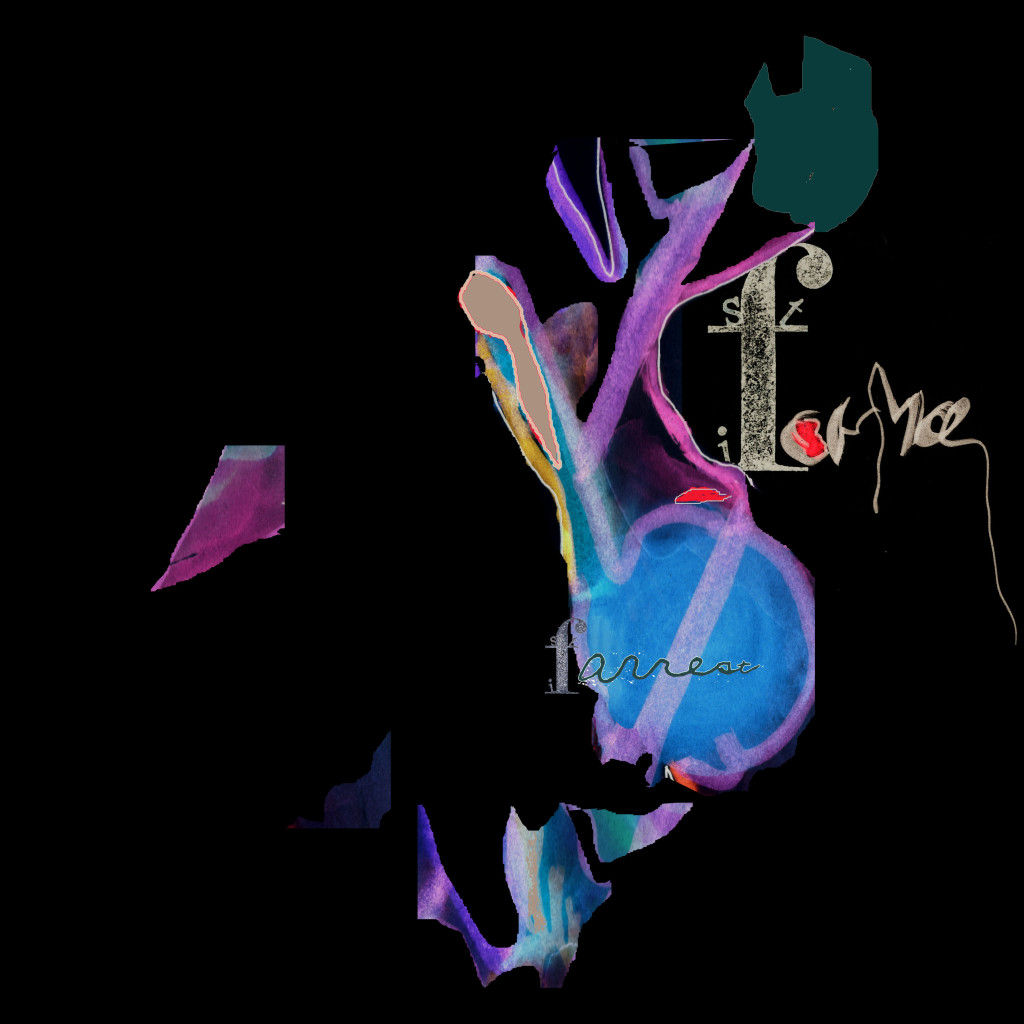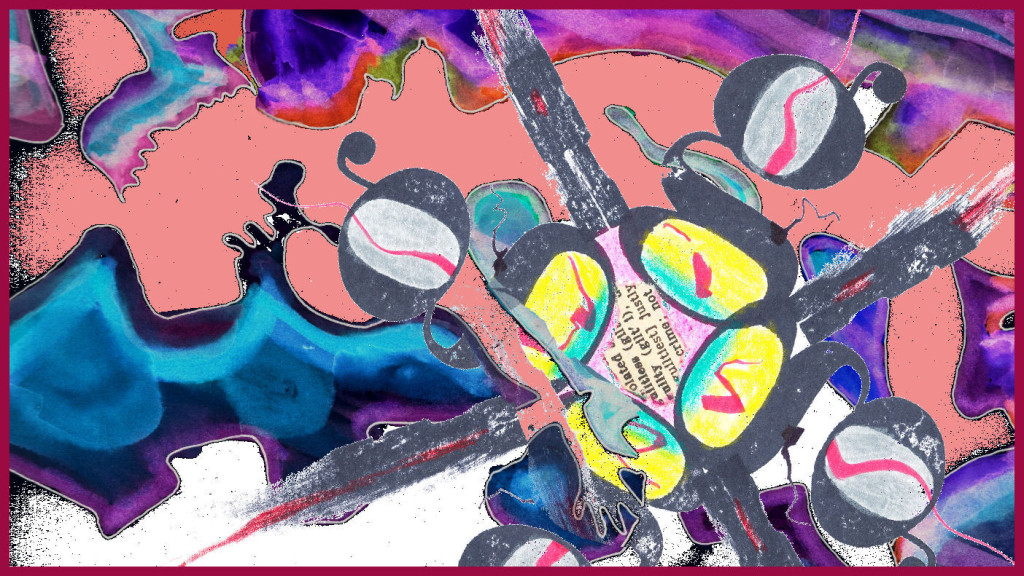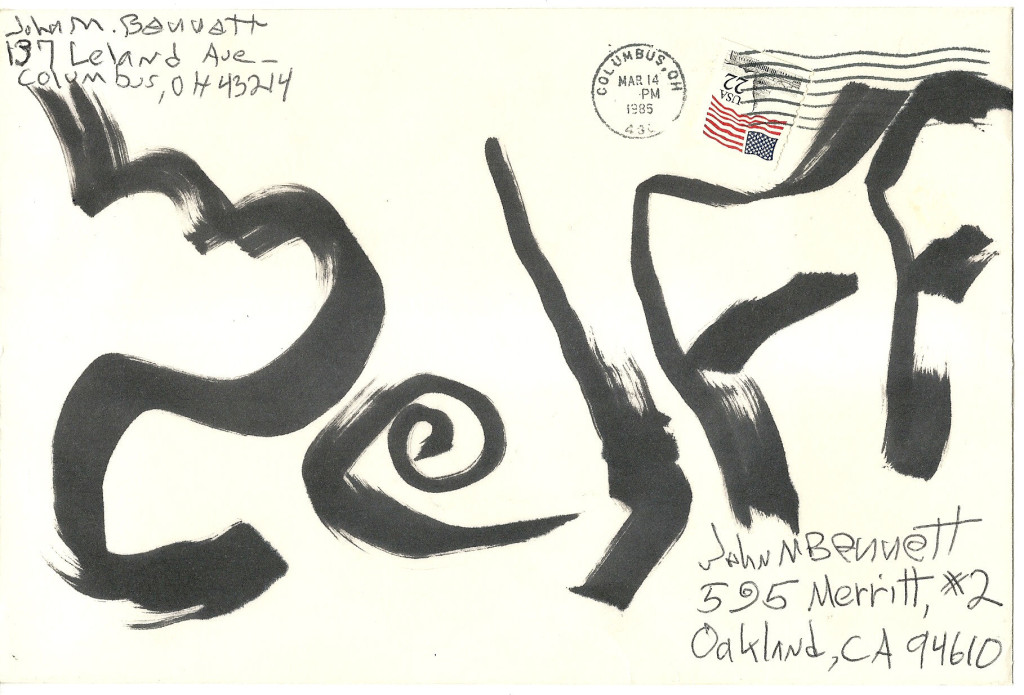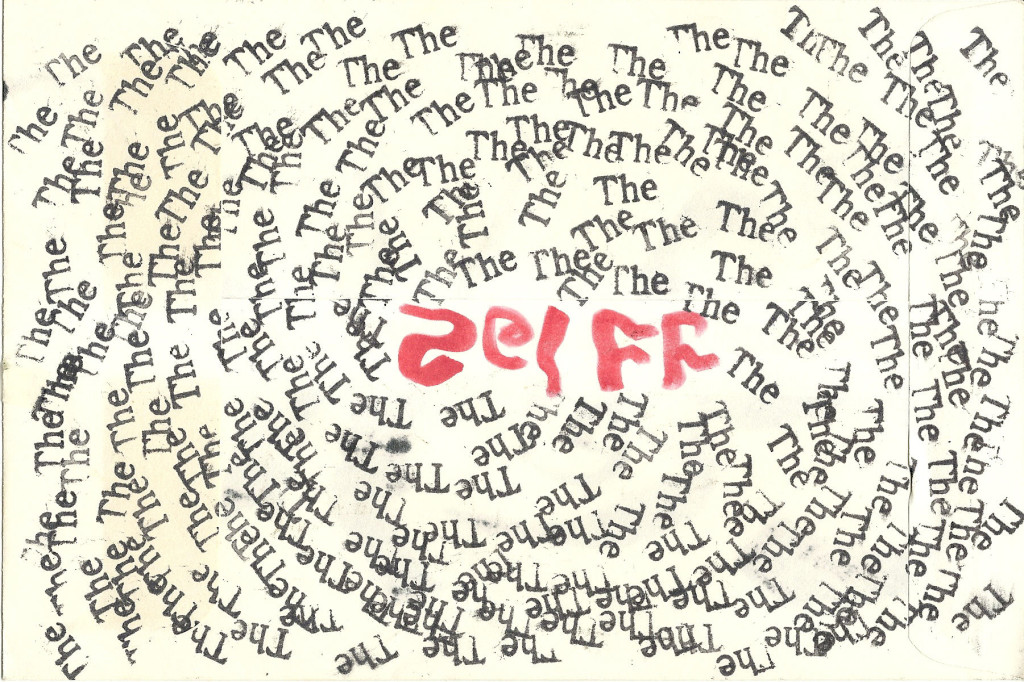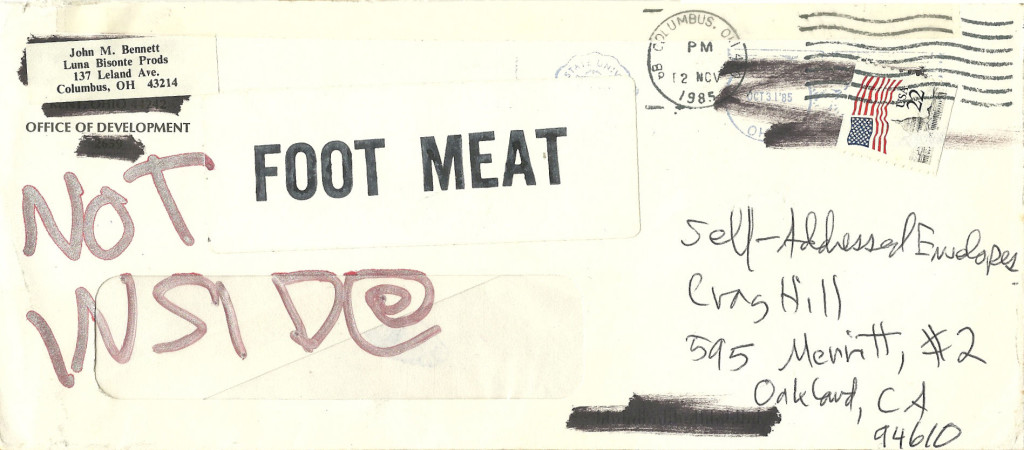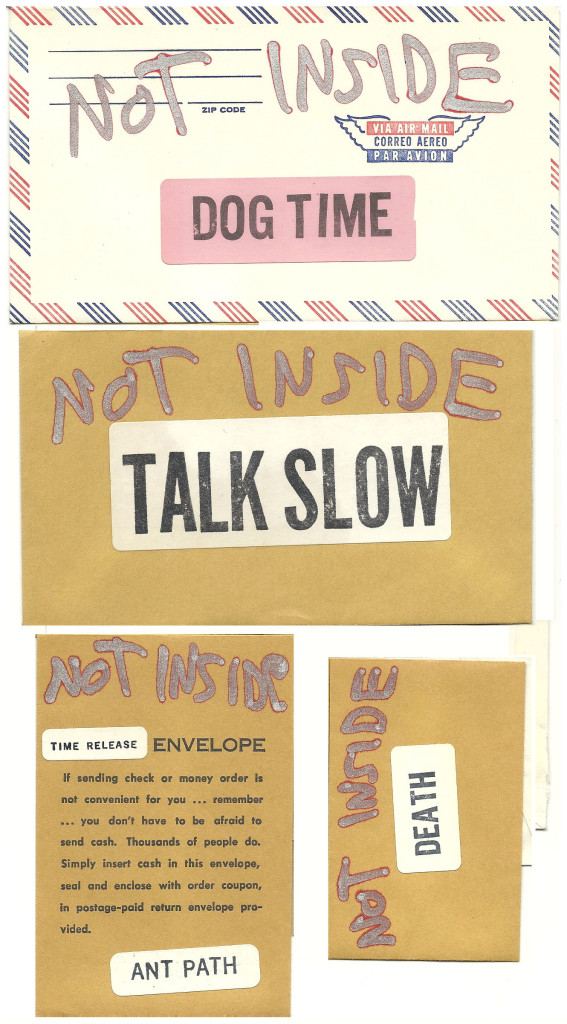Archive for the ‘Matthew Stolte’ Category
Entry 918 — Another Collaboration
Saturday, November 10th, 2012
I’ve reproduced the cover of Jem Tabs, the collection of collaborations between John Bennett and Matthew Stolte:
I seem to be going through a very empty period creatively, I think because I’ll soon be taking a short trip north for a niece’s wedding. Having to travel too far from home always screws up my mind. Anyway, I had to scramble to find something to put in this entry. I grabbed this mainly because, for some reason, I love the idea of scrawled words inside large letters, or parts of letters. There’s something metaphorically important involved but I can’t yet finger it. Needless to say, I like the way the thing looks, too. And it’s always worthwhile giving such material a plug.
.
Entry 916 — Stolte & Topel
Thursday, November 8th, 2012
Today I have another specimen of collaboration for you, something by Matthew Stolte and Andrew Topel from their ATORVTTK:
This is “just” a collage, but–frankly–I can’t yet begin to interpret it. That’s after the brief scan that is enough for me usually to see an entrance to some kind of meaning. Actually, the problem here might be to many entrances at once–which is definitely not a fault but a virtue that forces a pleruser to take a long time to unconfuse into proper appreciation. I can tell at a glance that this work (which is the first unit in a long sequence) is not slotched together. But I haven’t time yet to unconfuse, just time to enjoy the surface fun of the piece.
.
Entry 915 — Lunacy (Stolte/Bennett)
Wednesday, November 7th, 2012
Matthew Stolte is a young friend of mine whom I know only through the mail and the Internet, and John M. Bennett is an older friend of mine whom I’ve actually been within a foot or less of more than once! They both do work I greatly admire, so you should understand that when I call their chapbook collaboration of 23 pieces (which includes the graphics on both sides of each cover), Jem Tabs, lunacy, I mean greatly to compliment it. See below for its final interior piece and the inside of its back cover (and left-click it to see it better):
Fantasy Scenario Number Two: Jesus pays a visit to me and tells me I have two choices: (1) live healthily to the age of a hundred but continue having the sort of days I’ve had all my life–i.e., neither horrideously crappy nor particularly whoopeeic, or (2) spend a week with a 100 wacks like Matthew and John (hmmm, Jesus and Matthew and John?), each of whom has been hypnotized, if necessary, to want to spend twelve hours of each day we’re together, collaborating on works like the ones in Jem Tabs, and then leave this mortal coil in some innocuous manner. Easy choice. In other words, John and Matthew’s collabs make me drool to collaborate with either–or with the many others in our field known to enjoy collaboration. In fact, I can’t think of any such collaborations I’ve seen that don’t have a similar effect on me. Why aren’t I begging people to collaborate with me, then? Too much else on my plate at the moment.
One general thought about the two pieces above: that one unarguable thing they convey is the pleasure (I almost want to say, “the ecstasy,” but that would be an exaggeration) of the search for meaning, even though it may often not fully succeed, and even sometimes find hardly any large meaning. Most do lead one to enough discoveries to make one feel good, though. That’s all that almost any search for meaning will do. In the piece to the left above, I see, “shut close facet,” with the latter suggesting “focus,” because the its first four letters could be “focu,” and it ends in the center of a focusing wheel. Then comes the whirl of the request of the reader, or someone, to “set the dribbling/ from (the speaker’s) trembling/ face,” etc. around a triangle of visimages that include what looks to me to be a human ear that is also a tunnel. Much of a where keeps those caught in anthragreement with John and Matthew’s map willing to explore further.
Is its verbal content enough to make it a visual poem? I’m not sure. The expedition is there for those lunatic enough to see it regardless.
.
